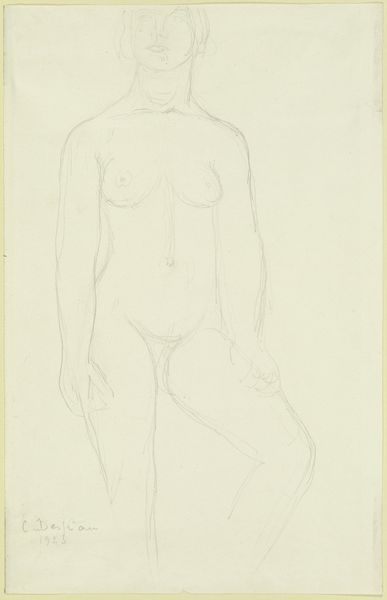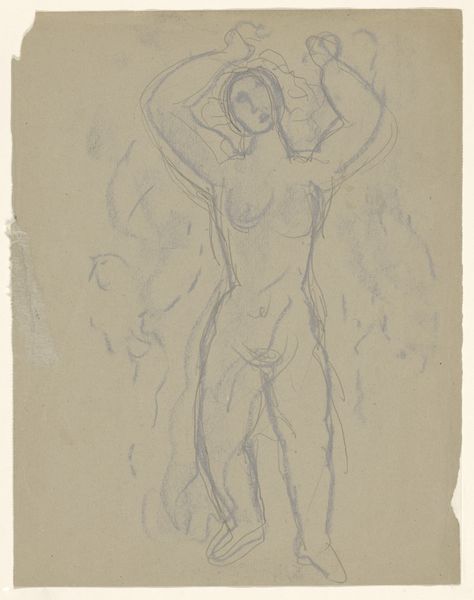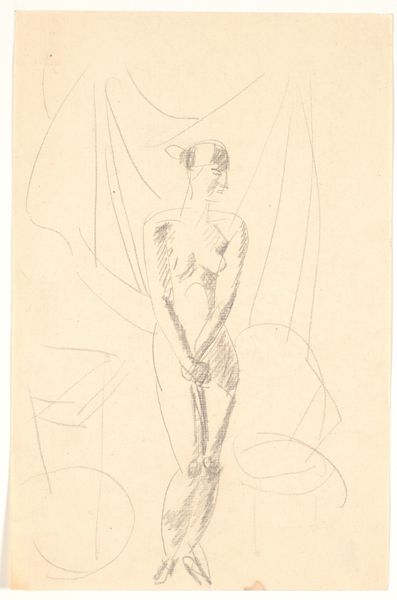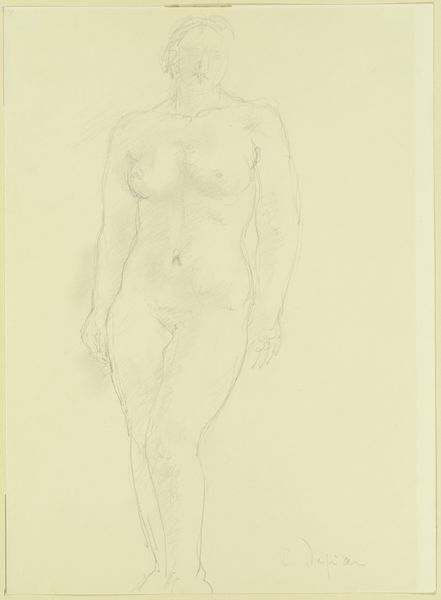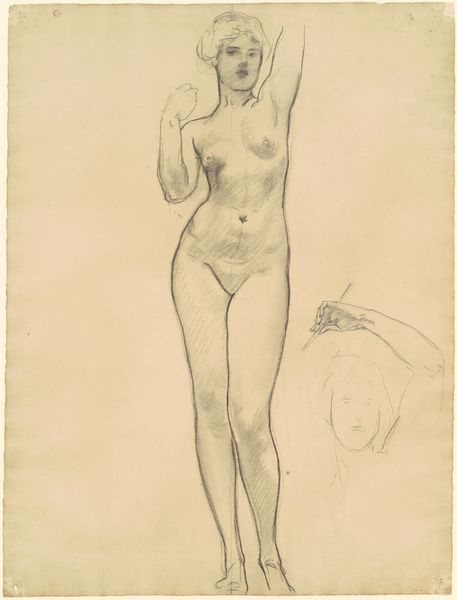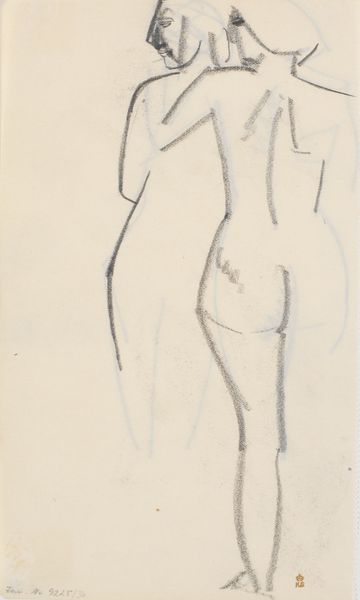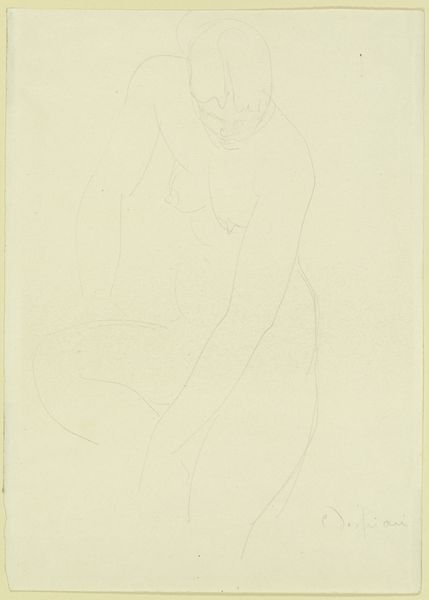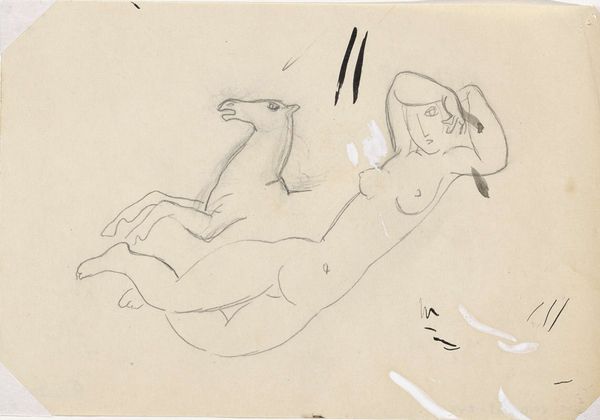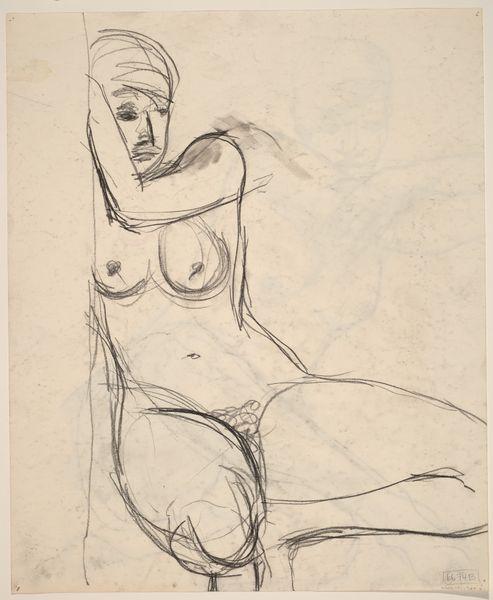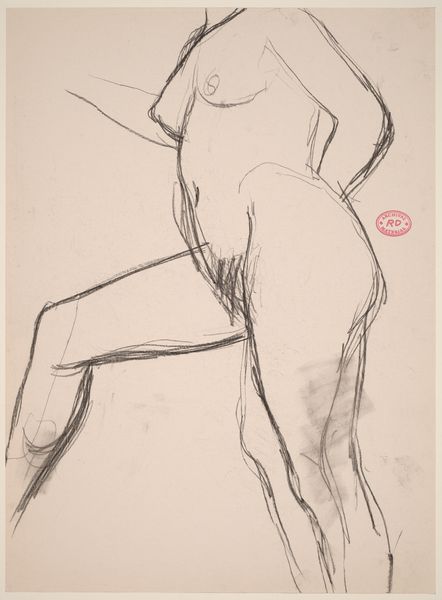
drawing, paper, pencil
#
portrait
#
drawing
#
figuration
#
paper
#
pencil
#
expressionism
#
portrait drawing
#
nude
Copyright: Public Domain
Curator: Here we have Ernst Ludwig Kirchner’s "Stehende Frau im Tub, sich abtrocknend," a pencil drawing on paper, likely from around 1924. What's your initial impression? Editor: Raw, almost vulnerable. It's a glimpse, an unpolished observation, using a humble pencil. What strikes me first is how unfinished it feels, more sketch than study. The quick red and blue lines have such an honest, almost clumsy materiality to them. Curator: I see that too – a tenderness emerges from what you call that "clumsiness." To me, that rawness holds an aching beauty, because it makes me think of the quick, snatched moments of ordinary life. Think about the feel of the paper, the give of the pencil—that simple labor. Editor: Exactly, the material reality! There's a beauty in those commonplace actions; it reflects his engagement with social structures. I mean, what was the cost of paper at that time? Pencil production? Was this accessible to the working class, or only for the bourgeois artist? These drawings, born from specific labor and resources, tell a complex story about art creation, availability, and what’s lost and found through each means. Curator: It's poignant you say that. Looking closer, the model isn’t idealized; her stance and gaze aren’t posed. And in some ways, that seems deliberately to resist the slick commercial art of his era, almost like a tender critique. The vulnerability makes it so that she and the materials seem entwined. It's almost as though she's in the process of revealing herself to him, in that moment, which brings with it so much beauty but also so much vulnerability. Editor: You make an important observation about intentionality. We often disregard sketches. But looking at the process of labor—the physical creation, paper and pencil—reveals so much about both his methods and perhaps even social statements! In a world flooded with manufactured objects and mass consumerism, that artistic simplicity with humble materials pushes boundaries. Curator: It certainly shifts perspective. Instead of aiming for glossy perfection, there’s truth here—an embrace of human form in its simple existence. It really resonates on an intuitive level. Editor: Yes, in a time increasingly focused on consumer products, considering art's means and social contexts brings the focus back to reality. And that's quite profound.
Comments
No comments
Be the first to comment and join the conversation on the ultimate creative platform.

